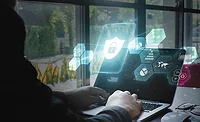Back to School Security for iPads in the Classroom

While the tools available to educators looking to integrate technology into the classroom are now better than ever before, there are still security considerations to take into account when implementing a digital curriculum.
As a provider of Apple-centric security solutions, SecureMac has outlined five of the top challenges faced when deploying iPads in a school setting, along with solutions that leverage the benefits of this powerful new technology in a safe and secure manner.
Problem faced by schools: Securely deploying and managing devices
Schools need a centralized system to efficiently handle tasks including app installation, software updates and locating missing devices. Additionally, steps must be taken to ensure that proper access control and security configurations are in place on any network that will be used by student devices.
Solution: Apple School Manager, coupled with a mobile device management (MDM) solution, allows a school to control all aspects of device deployment and management, including the ability to remotely lock or wipe devices in the event of loss or theft. Best security practices should be followed when integrating access for student iPads into an existing school network. Student devices should be audited on a regular basis to ensure that they have not been jailbroken to run unauthorized apps.
Problem faced by schools: Maintaining student privacy in a digital environment
Student privacy needs to be a top priority for any educational institution looking to harness the power of technology in the classroom. Apple does not collect information or track students, but data collection might be present in third-party apps used as part of the education curriculum. Not only do schools need to maintain the privacy of student addresses, birthdates and other personal information, they also need to ensure the compartmentalization of student-generated data when it comes to things like school assignments, essays and projects.
Solution: School administrators should periodically review the privacy policies of third-party apps to identify parental consent requirements and ensure compliance with existing student privacy policies. Apple’s recent introduction of a multi-user mode for iPads in education makes it possible to maintain individual account access on shared devices, which is especially useful when it is not possible to deploy devices to students on 1:1 basis.
Problem faced by students: Cyberbullying and online harassment
No longer relegated to the schoolyard, cyberbullying and anonymous online harassment can take place 24 hours a day, seven days a week, and as such can be much harder to identify and address. It is important to provide guidance and student outreach on the risks associated with these new forms of bullying, as well as to educate students on the danger of sharing personal and private information over the internet.
Solution: Teachers should make use of resources such as those found on stopbullying.gov in order to coordinate with parents and discuss online harassment and cyberbullying with students.
Problem faced by teachers: Limiting student access to inappropriate content
One of the problems faced when utilizing technology as a teaching aid is keeping students on-task in the classroom by limiting their access to inappropriate content and apps. While there are tools available to mitigate this risk in a school environment, additional challenges are presented when student devices will also be used at home.
Solution: Teachers can use the Classroom app to view any student’s iPad screen, launch specific apps or textbook pages on each iPad, or lock iPads into a single app to help students stay focused on the subject at hand. As part of device deployment, schools can restrict student access to specific approved apps as well as implement content filtering to block access to inappropriate websites. Coordination with parents might be required in situations where student devices will be used outside of school, as home networks often lack content-filtering capabilities. In such cases, parents should discuss appropriate internet usage with their children and limit the use of school-issued iPads to public areas of the house.
Problem faced by schools: App security and malware concerns
When evaluating apps to include as part of the educational curriculum, schools need a way to verify the security of third-party apps in order to avoid malware threats or potential privacy concerns. While Apple’s review process keeps the vast majority of malware out of the App Store, apps that make it onto an MDM’s whitelist might still have security or privacy concerns that a school should be aware of.
Solution: Schools should consider using a service such as https://verify.ly to uncover potential security or privacy concerns that might have been missed during the app review process by Apple or their MDM vendor.
Relevant links and further reading
The following links provide more in-depth information on the topics discussed in this article and are recommended reading for anyone looking to introduce iPads into their educational environment.
Apple education program overview: https://www.apple.com/education/it/
Apple School Manager guide: https://help.apple.com/schoolmanager/
Classroom App overview: https://www.apple.com/education/products/#ipad-assistant
Content filtering overview: https://help.apple.com/deployment/education/#/edu85ae8dd53
Verify.ly service overview: https://9to5mac.com/2016/08/16/verifyly-warning-label-apps/
Looking for a reprint of this article?
From high-res PDFs to custom plaques, order your copy today!



.webp?height=200&t=1630084048&width=200)




